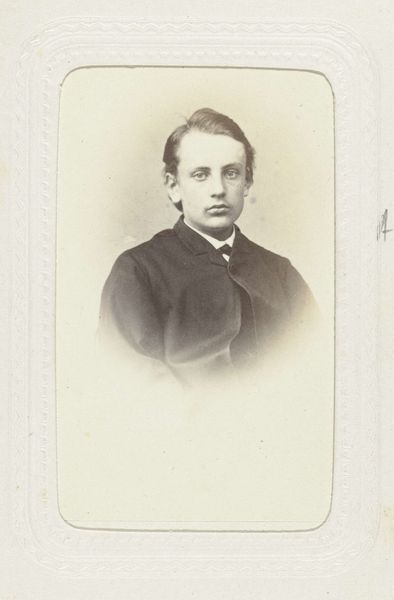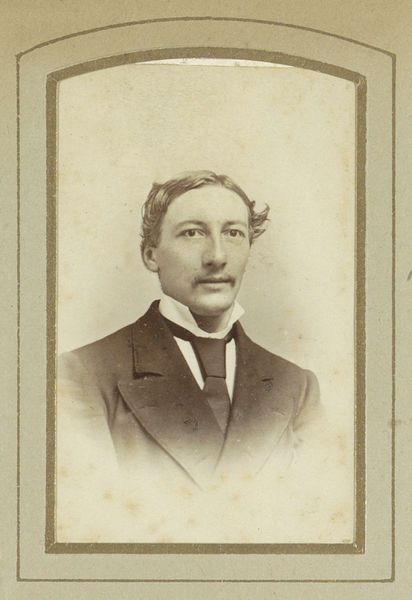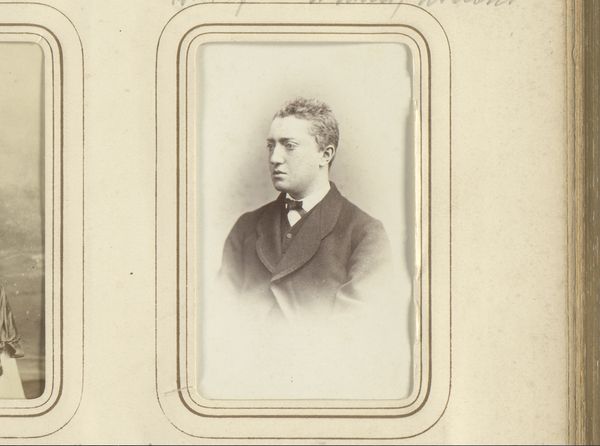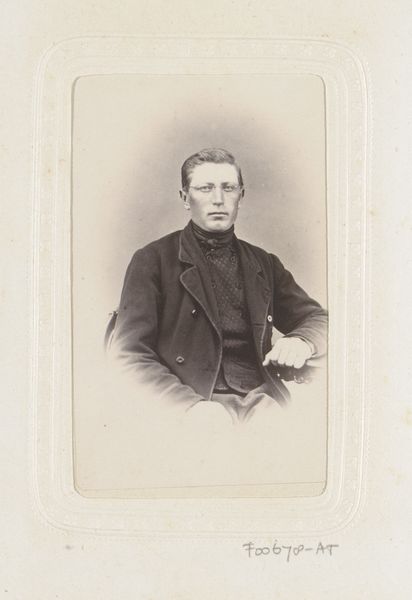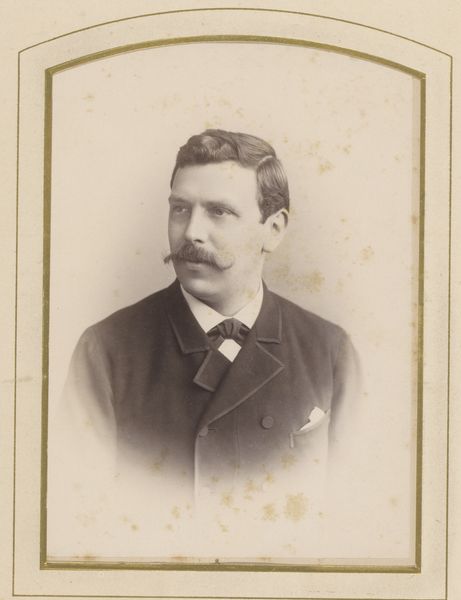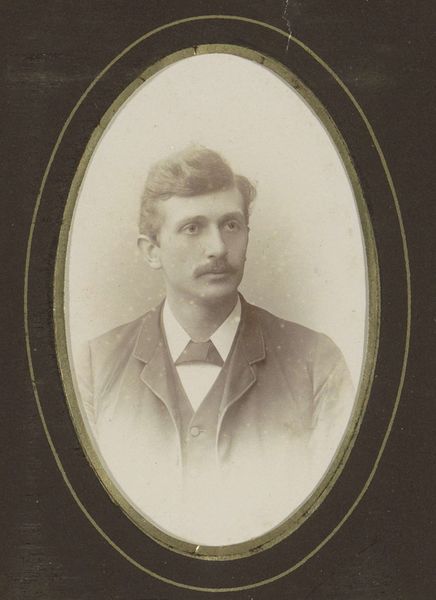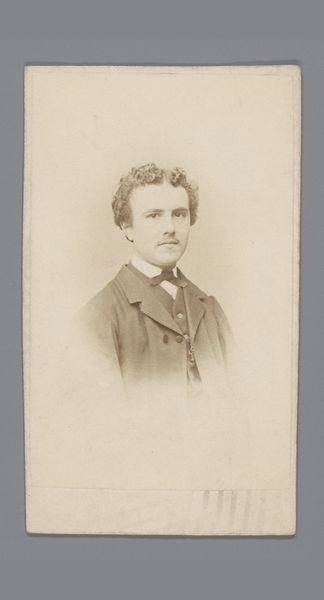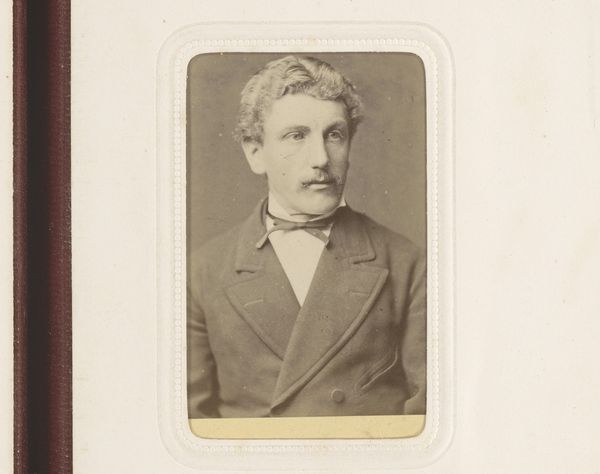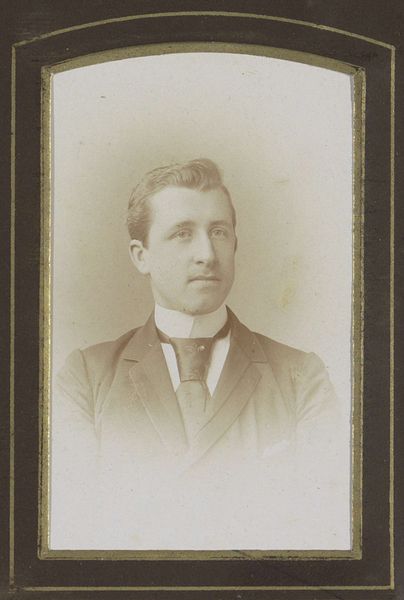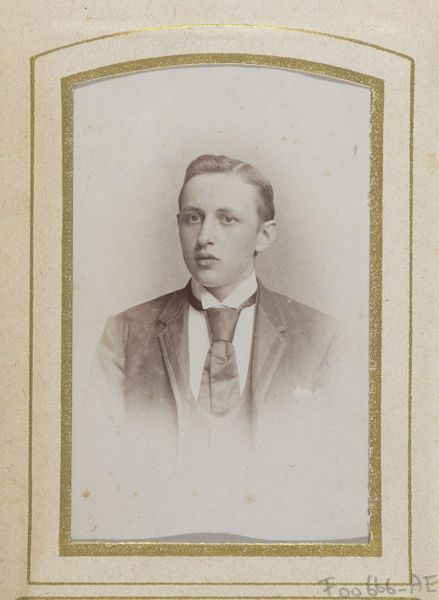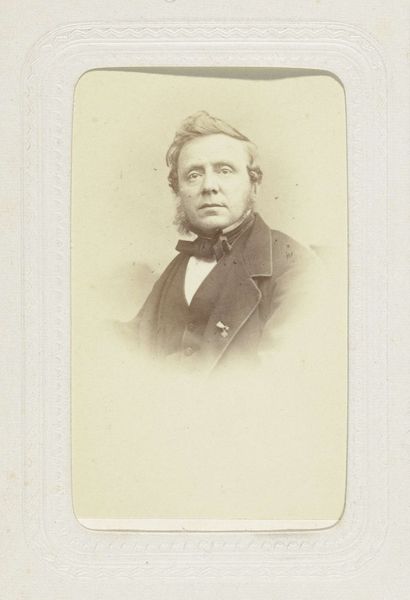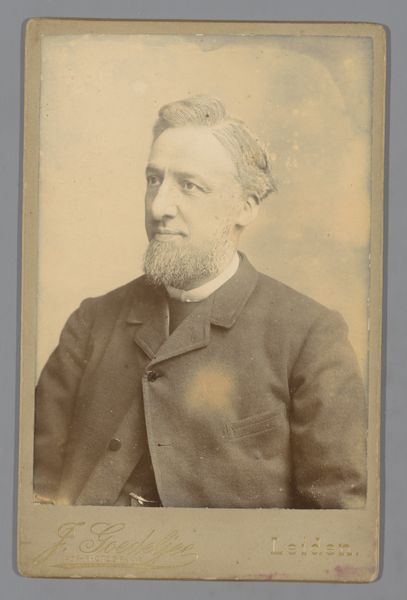
photography, albumen-print
#
portrait
#
photography
#
genre-painting
#
albumen-print
#
realism
Dimensions: height 80 mm, width 54 mm, height 296 mm, width 225 mm
Copyright: Rijks Museum: Open Domain
Curator: Immediately, there’s something about the tonal range that strikes me. Sepia, like an echo of time. Editor: Yes, exactly. We’re looking at "Studioportret van een man met snor en stropdas"—a studio portrait of a man with a mustache and tie, dating back to the mid-1860s. It’s an albumen print, currently held in the Rijksmuseum. This format would have allowed for the relatively easy production of multiples; one has to wonder, for what occasion would this man produce so many prints? Curator: His suit speaks volumes about the burgeoning bourgeoisie. Note the cut, the fabric – indicators of wealth and status. Consider the studio setting, a curated backdrop designed to project a specific image, reflecting both his aspirations and society's expectations. The labor invested is visible through the clothes he dons, even through a portrait we observe the socio-economics. Editor: Beyond the material, I'm drawn to his gaze—distant, almost melancholic. And his pose, a deliberate construction, carefully framed. This image uses framing, symmetry and the subject’s gaze in ways to elicit mystery from a regular portrait. Curator: Melancholy indeed! Consider the rapid industrialization of the era. Men such as the sitter must decide where to place himself amongst the growing chasm of technological and social reform. There is inherent disconnect from one's labor that he could be wrestling with that presents this appearance. Editor: I wonder, what would his interpretation of modern life and the rapidly expanding medium of photography have looked like through the subject's very eyes. Curator: Exactly. That relationship alone speaks to class divides, societal anxieties about representation and who controls what narrative about ones' being. Editor: It makes me reflect on our present obsession with documenting ourselves and how differently we understand a still image of our loved ones to someone who lived nearly 200 years ago. Curator: A photograph like this allows us to consider an important moment of economic and labor evolution; documenting our own historical timeline as our modern labor continues its own reformation is worth considering. Editor: Definitely, an image where form, light, and expression speak to a story much bigger than what meets the eye.
Comments
No comments
Be the first to comment and join the conversation on the ultimate creative platform.
